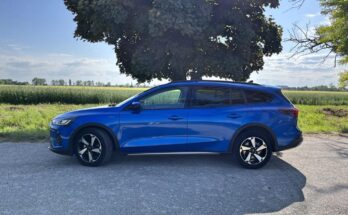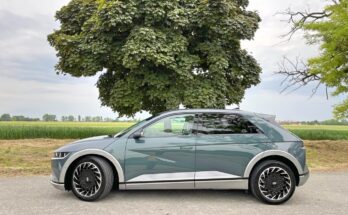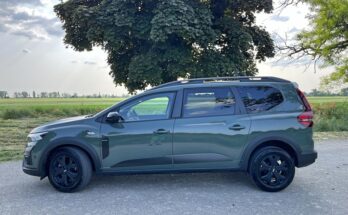Currently, our editorial test passed a car that offers another interesting option to satisfy your travel appetite. After the recently tested Rifter with a roof tent , here we have another completely different approach to camping.
The Toyota Nomad Wanderer passed our editorial test, specifically the Proace Verso model, which was equipped with a Sitka M camping attachment from Visu.
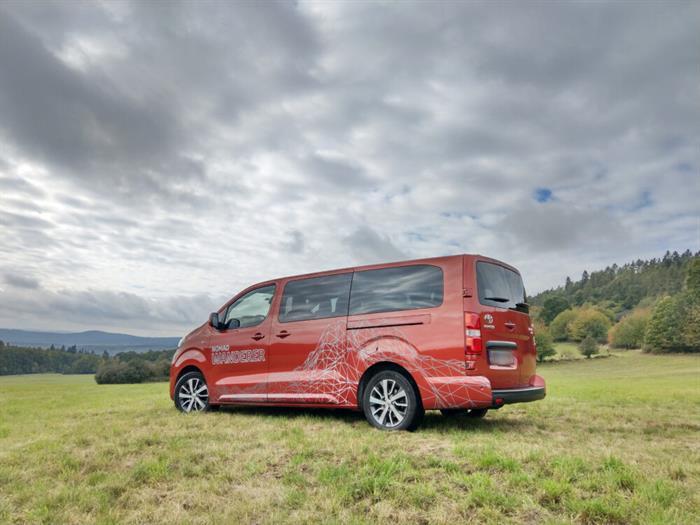
External appearance
The Toyota Proace Verso is based on the car company's joint cooperation with the PSA concern, its sibling models are the Peugeot Traveler , Citroen SpaceTourer and Opel Vivaro .
Logically, the longest body variant offered, also equipped with a long wheelbase, became the basis for the camping installation. The car therefore had a respectable length of 5309 mm.
Similar to its corporate siblings, Toyota is equipped with very calm, practical and simple shapes. A certain optical power is mainly provided by its front part with highly oriented lamps.
The side profile of the car impresses with its discreet cut-out, which takes place above the individual edges of the car, and in the case of the long body design, it has a relatively significant overhang behind the rear wheels.
The distinctive yet quite elegant color complemented by a dynamically cut sticker definitely contributed to the pleasant external appearance of the tested piece.
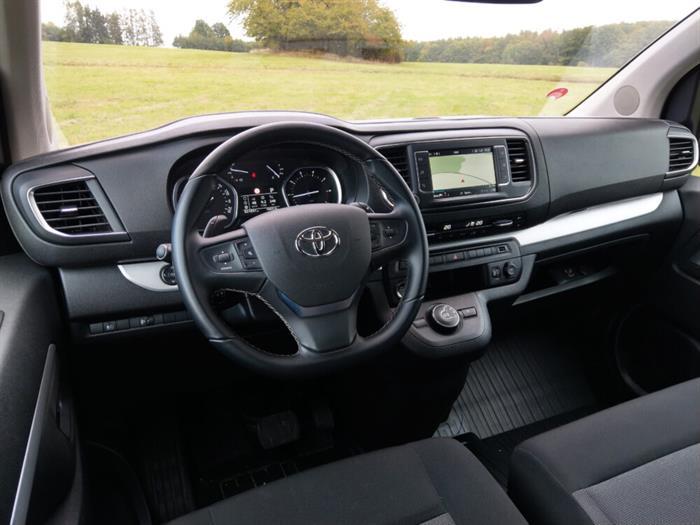
Interior
As for the interior, let's traditionally start in the front part of the body, the "box-like" shape of the car offers a very spacious interior, and the higher position behind the steering wheel gives a very good view from the car.
The relatively massive dashboard is for the most part optically placed above the side panels of the doors, so its position within the cabin is similar to the position of the driver and passenger rather higher.
The dashboard is otherwise very clear and user-friendly. In the center of the test car, a 7-inch on-board infotainment touchscreen was installed with a graphically relatively economical, yet clear environment.
The central part of the dashboard was also fitted with the already quite familiar eight-speed automatic circular controller, which also offers the function of manual shift paddles under the steering wheel.
The instrument cluster in front of the driver is the group's analog speedometer and tachometer indicators, which are traditionally complemented by a digital display of the on-board computer.
The multifunctional steering wheel itself, which was covered in leather including stitching, became very pleasant. In addition, it also offered a slight flattening in its lower part.
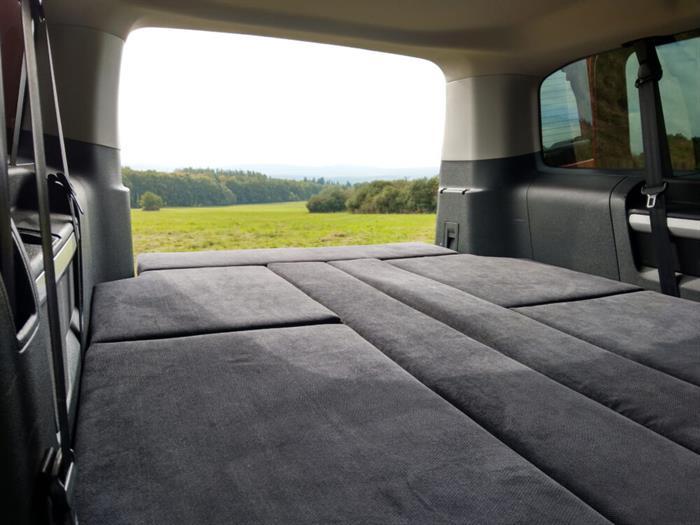
Camping treatment of Vis
However, let's focus on the most important thing that the tested car offers us. The Sitka M camping equipment from Visu became the most important.
This installation makes full use of the space between the second row of seats and the rear wing doors. Basically, it is a load-bearing steel structure in combination with wooden plywood boards.
The steel structure is equipped with storage spaces in its lower part, which are solved using easily removable "bags". The upper part of the structure is then equipped with approved plywood boards, on which a bed for sleeping two people is placed. This basic position can then be modified, using the hinged middle part, to a "bench" seat with a table in the middle.

In the rear part of this building, a certain "background" (kitchen module) is accessible after opening the wing door. This is offered by a pair of other separately accessible boxes, within the third box there are two 10l barrels for water. The announced pair of boxes will offer the classic proprieties of the right traveler (gas stove, camping pots, plastic organizers, mugs, glasses, cutlery, etc.), their hinged doors then a standby work surface.
The dimensions of the residential building itself are quite logically limited by the size of the car body. Both the length of the bed itself and the space above the head when sitting suit rather medium-height figures.
Access to the rear "residential" part of the car is quite trouble-free. The tested car offered sliding side doors on both sides of the body and a folding second bench for sitting.
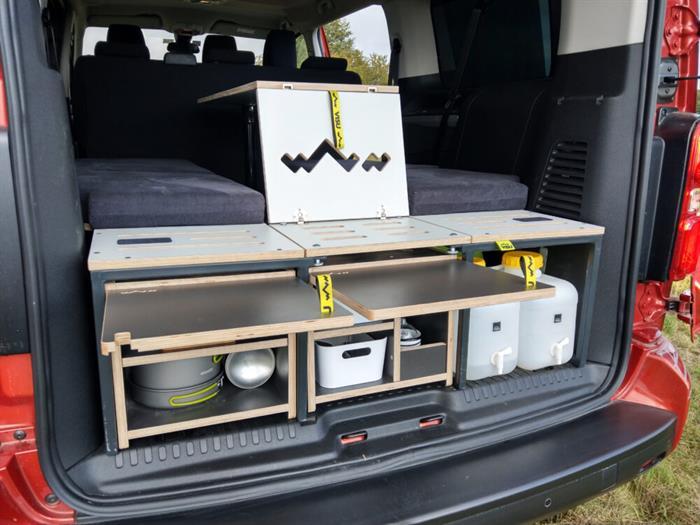
The company Visu offers built-ins in two sizes, the larger Sitka M and the smaller Sitka S, as well as the universal Sitka Sport. The largest Sitka M built-in unit tested is offered by the company for CZK 94,259 including VAT for a complete set. The smaller Sitka S costs CZK 92,444 including VAT again for a complete set, and the universal Sitka Sport starts at CZK 48,279 including VAT.
Other camping accessories are also on offer. The Camping Tashka includes 2 Coleman chairs, 1 aluminum table, 2 fleece blankets, a lamp and 2 Tashkas with a split space. All available from CZK 5,929 including VAT.
I must also mention the awning, which is solved here quite simply. The side part of the roof of the car is equipped with a relatively subtle bar, into which the tarpaulin, which forms the awning itself, is inserted. It is then "turned off" with the help of two tubular stands and tensioning ropes. The advertised simplicity entails only the necessary presence of two people.

Tested engine and driving impressions
The tested car was equipped with a turbocharged two-liter diesel 2.0 D-4D 180 with an output of 130 kW (177 hp) and 400 Nm of torque. The motorization offered a very refined operation with a smooth increase in power, in addition to excellent cooperation with the eight-speed automatic.
The eight-speed automatic and two-liter diesel make traveling with this car extremely comfortable, the eighth gear allows the engine to roll over slightly at highway speeds, and speeds above the Czech highway limit are not the slightest problem. Thus, the Nomad Wanderer manages long traveling kilometers within the framework of individual transfers with great insight.

In conclusion
Toyota Proace Verso is offered in only two lengths L1 and L2, so the car is available without a shortened wheelbase compared to its "concern" siblings.
The basic version with Kombi equipment, length L1, diesel fifteen-speed manual and six-speed manual can be purchased from CZK 624,000 including VAT. The longer L2 version with the same basic specification starts at CZK 653,000 including VAT. And that is quite a reasonable price basis for the acquisition of a tested residential building.
Personally, I see a big positive in the multi-purpose of a car that is equipped with this installation. The tested installation will definitely not bring you the full-fledged comfort of a classic motorhome, but on the other hand, you don't have to look sadly at it as it stands in your garden for most of the year. In this case, you simply dismantle the tested installation and then use the car as you wish all year round. And that in the case of the tested specification, it was a very user-friendly car.
Source: Author's text
Image source: Author's own photos

























